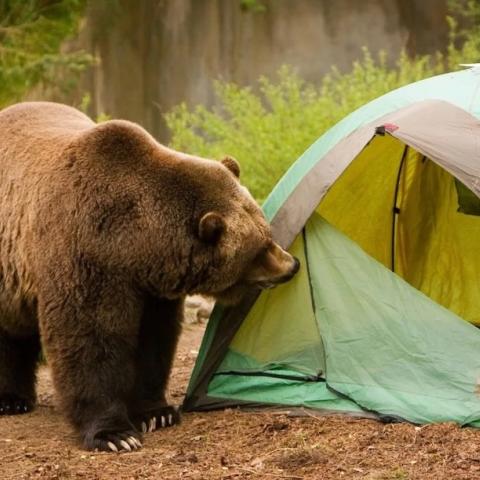
String Lake panorama in Grand Teton National Park/Tony Hochstetler, Creative Commons Attribution 2.0 Generic
One of the most popular summer destinations at Grand Teton National Park is String Lake, just north of Jenny Lake. That popularity, though, has created more than a few incidents with visitors and bears in the area, and the park staff has stepped up with some management changes to improve safety for both species and better protect the natural resources there.
Last summer, researchers found that more than 4,000 people visited the String Lake area daily during the peak months. Nearly a quarter of those visitors spent at least 3-4 hours at String Lake.
Visible changes being implemented to better manage the area will include: increased messaging about proper food storage practices and safe and responsible picnicking, rope and pole barriers along trails and lakeshore access to protect sensitive wetland and riparian habitats, road delineators to channel traffic and protect pedestrians and cyclists, and designated horse trailer parking at the Cathedral Group Turnout. Park staff will monitor the piloted changes, and adapt as appropriate.
In addition to the changes visitors will see this summer, the park is continuing the “Lakers” volunteer program. The Lakers are a dedicated group of volunteers stationed at String Lake whose purpose is to promote visitor safety and minimize human-wildlife interactions. Since their inception in 2016, the Lakers have educated thousands of visitors on the importance of food storage and bear awareness at String Lake. From May through September the Lakers maintain a presence seven days a week. These volunteers are vital to providing opportunities for safe visitor access and enjoyable experiences at String Lake.
Proper storage of food items and responsible picnicking are vitally important in bear country. Picnickers should only have immediate use items out so that if a bear approaches, food items can be quickly gathered and the opportunity for the bear to receive a food reward is removed. Visitors should store food and scented item in a hard-sided vehicle or in bear-resistant food storage lockers that are located throughout the park. The String Lake area has 12 food storage boxes available for public use, supported by Grand Teton National Park Foundation.
During the summers of 2017 and 2018, park staff worked with researchers to better understand visitor use and experience at String Lake and Leigh Lake, including lakeshore access, parking, wayfinding, sign management, and human-wildlife interactions. Researchers found that high visitation at String Lake took place between 11 a.m. and 3 p.m. The park encourages visitation during off-peak hours.
The String Lake area includes three parking lots, two picnic areas, lakeshore access, and restroom facilities. Plan ahead before your visit to String Lake and consider the following:
- Large groups are encouraged to carpool.
- Check the weather forecast before you arrive to better plan your day and destinations. If you plan to hike later in the day, it is critical that you know the weather forecast for the elevation of your destination, particularly to avoid lightning and thunderstorms.
- Arrive early or late as the parking lots at String Lake are typically full between 11 a.m. and 3 p.m.
- Be thoughtful of other visitors who are enjoying the natural landscape and soundscape.
- Picnic responsibly and have a plan in case a bear approaches. Utilize food storage boxes to minimize human-wildlife interactions.




 Support Essential Coverage of Essential Places
Support Essential Coverage of Essential Places






